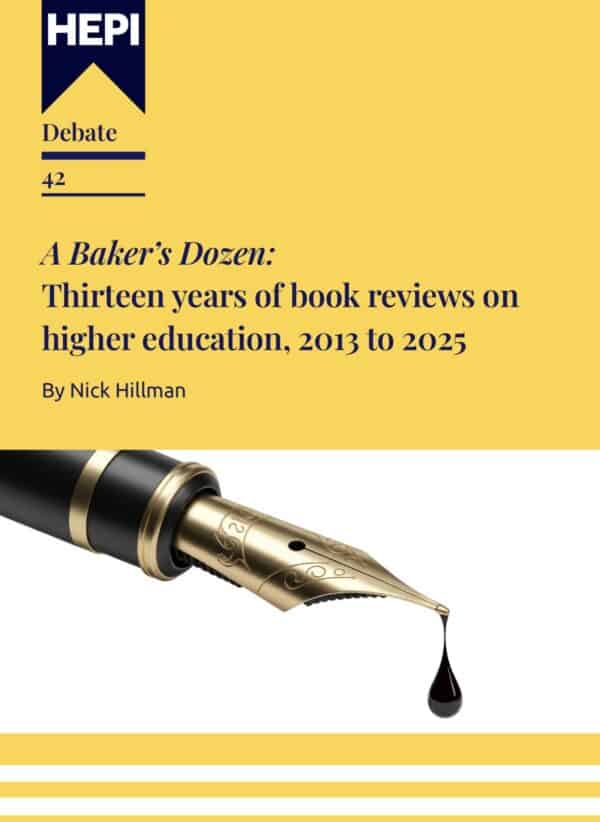WEEKEND READING: University Collaboration – the case for admissions and professional registration
This HEPI guest blog was kindly written by James Seymour, who runs an education consultancy focusing on marketing, student recruitment, admissions and reputation and Julie Kelly who runs a higher education consultancy specialising in registry and governance challenges. Julie and James have worked for a range of universities at Director level in recent years.
The Challenge
All through August and September, many admissions and faculty/course teams have been working hard to get thousands of new students over the line and onto the next stage of their lives. It is more than just their UCAS application, interview, selection and firm acceptance or journey through Clearing – they have to actually enrol and succeed too.
Many of these students are training to be nurses, teachers, paramedics, social workers and doctors amongst many other allied health professional and education courses. They all need to go through essential and important Professional, Statutory and Regulatory Body (PSRB) requirements and additional compliance checks, from passports, to Disclosure and Barring Service questionnaires, to health questionnaires and more. Many are mature students who must demonstrate GCSE or equivalent competency at Grade C/4 or above. They are less likely to have support navigating this process as they are less likely to be in full-time education.
Most of these applicants have already been interviewed, attended selection days or Multiple Mini Interviews – MMIs (like selection speed dating) involving lots of competency stations.
These health students also must apply for their Student Finance loans in good time to trigger the all-important £5K+ NHS learning support fund – essential to enable them to succeed and even get to their clinical placements via bus, train or car.
It’s a very onerous process for applicants, their supporters, and the academic, admissions, and compliance teams, who must arrange and record all of this.
Clearly, getting all this information recorded and verified is important, but does it have to be so admin-heavy and time-consuming? Are we putting up barriers and disincentives deterring students from starting their studies?
At present, we have an inconsistent mess, often involving email and incessant chasing.
There has to be a better way
Over the last 10 years we have been involved in a number of process improvement/student journey projects at a number of UK universities. In our experience it takes at least five times longer to admit a Nurse compared to a Business, Law or English student, and at least twice as long compared to a creative arts student who submits their portfolio for interview and review. Data from The Student Loans Company indicates that at least 25% of all new students only apply for their loans on or after results day in August – presenting real risk of delays in getting their money in time for enrolment.
Typically, only 85-90% of Nurses and other key NHS-backed students who have a confirmed UCAS place in August actually enrol in September. Another 3-5% have left before January.
This is not all about motivation or resilience – part of the issue is linked to getting these students over the line with all the additional hoops they have to jump through.
Another issue is around wasted resource across the sector and a poor student experience. A student typically applies to their five UCAS choices, and many universities undertake the additional PSRB checks during the admission process. A student is therefore having to supply their information to multiple institutions, which then need to be processed for students who may never actually enrol. Surely it is better for students to supply this information once during the initial application stage?
Postgraduate Teachers including PGCE and Teach First students have to navigate a gov.uk application process (rather than UCAS) which feels like completing your tax return. A daunting and clunky first step to train in one of the most important careers any of us will ever do. They also only get three choices for courses that start in early September – only 2-3 weeks after many final year degree results are confirmed, putting undue pressure both on students, schools and institutions alike.
It’s clear that in the context of improving efficiency, eventual enrolment and reducing stress for all, a more collaborative approach across UK HE and professional training would be a real win. The same issues apply for onboarding, applications and selection for degree and higher apprenticeships.
The NHS workforce plan signals a clear need to train more Nurses and other key NHS staff and we know that teacher recruitment targets have been missed again this year.
Solutions and Future Projects
In the context of collaboration between universities, NHS, UKVI, UCAS and DfE we propose some key, essential ways to improve the process and increase the pipeline of future health and education professionals.
- Create a safe, secure one-stop shop for PSRB checks, uploads and compliance so that students do it once and can be shared with all their university choices and options. There are a number of Ed Tech companies as well as UCAS, providing portals for applicants and the Gov.uk system is already improving each year.
- As well as the process, revisit the timeline for applications and compliance for NHS and other PSRB courses – if this is all checked and ready by April-May and directly linked up to Student Finance Applications and/or NHS bursary support – far more students would be able to enrol, train and be ready to learn. This would require proper process mapping and joined up thinking across different government departments, UCAS and universities themselves.
- The HE sector and NHS should collectively review the factors, groups and critical incidents affecting non-enrolment and first year drop out – nationally and across all PSRB courses – and work at pace to ‘fix the leaks’ accordingly. At present these data sets are not shared or acted upon across the UK but only via individual universities, trusts and occasionally at conferences and sector meetings.
- UCAS and exam boards need to urgently bring forward automatic sharing of GCSE results via the ABL system so that universities and applicants can be assured of level 2 qualifications.
- Look at alternatives to the ‘doom loop’ of GCSE Maths and English retakes and essential requirement for entry to NHS and other professional courses. There are already alternative qualifications including Functional Skills and these need to be amplified, so more students are able to get over the line and start training.
- Universities should work together not against each other. Each university or training provider spends many tens of thousands each year on recruitment campaigns. For Nursing degrees alone, we estimate this to be at least £1M per year; pooling just 10% of this figure to ensure a consistent brand and overarching campaign would widen the pool of applicants rather than pit universities against each other.
- Review the application process for Postgraduate Teacher Training – consider whether it should be given back to UCAS or another tech platform to improve visibility, choice, applicant journey and eventual enrolment figures. Clearly only three choices is not enough with some providers being more efficient than others in responding to applicants and dealing with application volumes. The resulting bottlenecks impact on applicant confidence in the system. The early September start date for PG teaching courses also needs a review. Apart from the application time pressure, these students are also starting before the campus (and school?) is truly ready for the start of term. Why not start with the rest of their peers at the end of September and also introduce a January start point as an option?
- Make funding more consistent and long term – at present universities are only paid to train students based on first year intake each year, leading to short term decisions, volatility and competition. The LLE due in 2027 is unlikely to lead to flexibility in PSRB course transfer. Giving universities and health trusts a 3-4 year funding model would iron out that volatility, encourage new entrants and provide certainty to invest in facilities, staff and support to train those students.
Conclusion and next steps
As the HE sector looks back on admission and enrolment for the 2025/26 academic year and prepares for 2026/27 entry we feel that something must change to enhance the admission process for PSRB courses, all of which are critical to the future of the UK.
The practical steps and ideas included within the article are all deliverable but need joined-up thinking across different parts of the process. We propose establishing a working group or task force to address quick wins and consider a roadmap for addressing longer-term solutions.







Comments
Jonathan Alltimes says:
Why have these complex bureacratic processes not been simplified and digitised?
“The RCN has calculated that the attrition figure for nursing students is 21%.”
So with all those selection processes, one fifth of every cohort drops out.
Source:
https://www.rcn.org.uk/news-and-events/Press-Releases/32000-nursing-students-could-quit-by-2029
Reply
Add comment